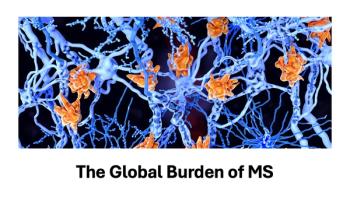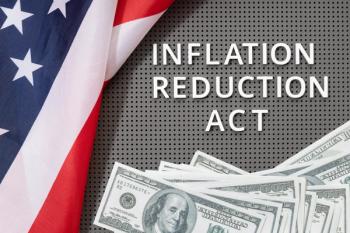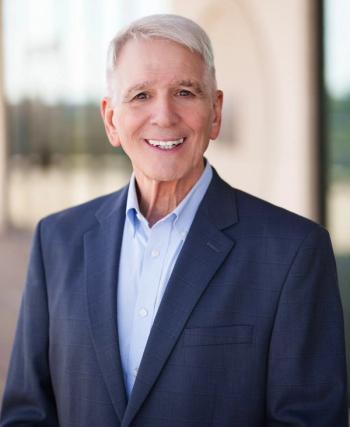
Shifting trends in the pharmaceutical marketplace: What to watch
From public furor over price hikes to the loss of patent protections for blockbuster drugs, big changes are afoot in the pharmaceutical marketplace. Read more.
From changes in the regulatory and reimbursement landscape to decelerating sales, the U.S. pharmaceutical market is undergoing important changes, reported Douglas M Long, BS, MBA, vice president for industry relations at QuintilesIMS, at the AMCP Managed Care & Specialty Pharmacy Annual Meeting in Denver.
Long spoke during the March 29 session, “AMCP Headline Session: 2016-2017 Pharmaceutical Marketplace Trends.”
“Well, 2016 was an interesting year,” Long said. “We’ve seen more regulation of opiate drugs. That’s going to happen more and more in the future. Medicare Part B reform was rescinded. We have a shortage of doctors. The Rite Aid/Walgreens merger is up in the air.”
Noteworthy 2016 trends
The past year saw below-average flu and allergy seasons, declining revenues from generic drugs, new FDA and DEA guidelines on controlled substances, and the launch of generic versions of Crestor, Gleevec, Tamiflu, Nuvigil and other lucrative brand drugs, Long said.
“Generics are experiencing price deflation since early 2016, according to Barclays Price Monitor,” he said. Generics represented a smaller market share in terms of dollars but a growing proportion of total prescribing. “Unbranded generics have captured 84.3% of scripts,” he noted.
The U.S. healthcare system saved nearly $1.5 trillion over the past decade thanks to low-cost generics, Long noted.
The FDA approved a record number of abbreviated new drug applications for generic drugs, with 651 approvals in 2016, compared to 492 in 2015 and 409 in 2014, he reported.
Public debate and downward pressure
Last year also brought election-year headlines and attention from policymakers to dramatic drug price hikes by Turing, Valeant, and Mylan. Ensuing public anger, congressional inquiries and a U.S. Department of Justice investigation “put a big chill” on generics pricing, leading to generic price declines, Long reported.
Public debate over drug costs is driven in part by confusion over list prices versus prices actually paid, Long noted. But public anger over pricing has helped drive price deflation for generics, he said-as has competition from manufacturers in India and building “consortium bid pressures.”
“EpiPen was a really interesting one,” he said. “They talked about a list price of $600. I can tell you that very few people pay $600. The negotiated price was less than $300-so who were the people paying $600? People in high-deductible insurance plans.”
The continuing crisis in opioid overdose deaths brought more headlines and policymaker scrutiny. Narcotics sales in 2016 also dropped by $1.6 billion compared to 2015, due in part to continuing declines in hydrocodone prescribing.
Deceleration in pharmaceutical sales growth
Accompanying those trends has been an overall deceleration in year-over-year pharmaceutical sales growth-down from 13.5% in 2015 to 5.6% in 2016. Expiring patent exclusivity periods for Nexium in 2014, Abilify and Gleevec in 2015, and Crestor in 2016 were followed by declines in sales that exceeded $8 billion.
While spending on specialty medications grew by $3.7 billion in the third quarter of 2016, sales growth rates actually declined.
“Specialty spending growth is slowing from the record high growth rates reached in 2014-2015 with Hep C,” Long said. Sales in hepatitis C drug sales in 2016 came in at roughly $3 billion less than 2015, he noted. “Specialty medicines are approaching 45% of spending overall, approaching 70% of hospital [drug] spending.”
Biosimilars will play a big role in the specialty drug market in the future, he said. U.S. patent protection periods for the top 10 biologics-representing $79 billion in sales globally-will all expire by 2020, except for Enbrel (etanercept), for which the U.S. patent period was extended to 2028.
Record growth in hepatitis C prescribing occurred in 2014 and 2015 “before prior authorizations went out, when anybody who wanted Hep C drugs could get one,” he said. “So this decline in growth rate happened between 2015 and 2016 because of Hep C.”
Whether more people will start using hepatitis C drugs as prices decline is an open question, Long said.
“There were some other reasons” for the declining growth rate, he added. “Nexium went off-patent, Abilify, and Gleevec-these were all top-10 products. Loss of exclusivity represented billions in lost value. That’s not unusual.”
Sales in 2016 for diabetes, cancer, autoimmune, and anticoagulant drugs all saw improved growth rates compared to 2015. Innovation is currently “very strong” in oncology and orphan drugs, he said.
But growth in psychiatric, lipid regulating, and hepatitis C sales declined.
Future outlook
Looking ahead, Long expects demand to remain robust but for the shift from brand-name drugs to generics to continue.
Changes in out-of-pocket expenses for patients, like copays and higher deductibles, will reinforce the trend toward more use of generics and will place patients at risk for noncompliance with prescribed treatments, Long cautioned.
Long-term, aging baby boomers will drive up spending.
“Healthcare expenditures are going to grow because we have an aging population and chronic diseases at rates we’ve never seen before,” Long said.
Newsletter
Get the latest industry news, event updates, and more from Managed healthcare Executive.






















































